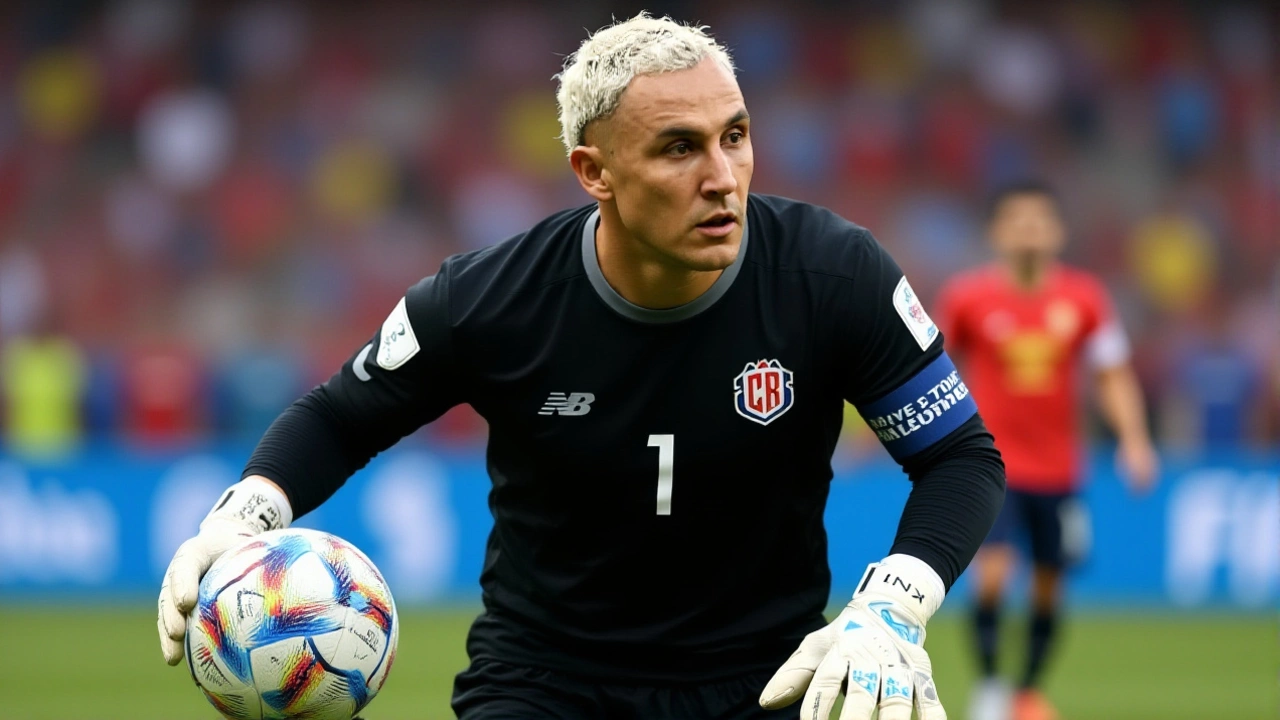
The final whistle at the Estadio Nacional de Costa Rica in San José didn’t just end a match—it buried two nations’ World Cup dreams. On Tuesday, November 18, 2025, Costa Rica and Honduras played out a tense, goalless stalemate in the final match of CONCACAF Third Round Group C qualifying for the 2026 FIFA World Cup. The 0-0 draw wasn’t just disappointing—it was catastrophic. Both Central American rivals, who entered the match with realistic hopes of advancing, now face the cold reality: neither will be in North America next summer. The Classico Centro Americano, as this rivalry is known, ended not with fireworks, but with silence. And for fans in both countries, the silence was deafening.
Why This Match Was More Than Just Another Qualifier
This wasn’t just another game in a long qualifying cycle. It was the last chance. Honduras came in with 9 points (2-3-1), needing a win to keep their hopes alive. Costa Rica, with 7 points (1-4-1), had to win outright. But neither could afford to lose. The stakes? A direct ticket to the 2026 World Cup, hosted jointly by Canada, Mexico, and United States. Only the group winner gets that ticket. Second place? You get a playoff ticket, but even that vanished when Haiti secured 11 points (3-2-1) with a win over Nicaragua on the same day. Haiti, a team that hasn’t played a home match in four years due to gang violence controlling 85% of Port-au-Prince, became the unlikely group leader—on the road, in exile, and now heading to the World Cup.The Match: A Battle of Nerves, Not Goals
The first half was a chess match with cleats. Ugalde started aggressively for Honduras, but Navas in goal for Costa Rica made a crucial early stop. A right-footed effort from Flores was blocked. Luis Vega went flying into a tackle that drew gasps from the crowd—only to be waved off by the referee. At halftime, the scoreboard remained blank. No one expected a goalless draw to be the final outcome, but that’s exactly what unfolded. The second half was more desperate than dynamic. Substitutes like Celso Borges and Kevin Chamorro for Costa Rica, and Creichel Pérez for Honduras, were thrown on like last-ditch reinforcements. At the 75th minute, a long ball found Joseph Mora in space—he shot, but the ball curled just wide. At 85’, a Honduras corner was cleared off the line. At 90+10’, the referee blew the final whistle. No goals. No drama. Just a 0-0 result that felt like a funeral march.
What This Means for Both Nations
For Costa Rica, this is a historic low. They’ve qualified for five World Cups since 1990. They’ve been the region’s most consistent team. But now, they’re out. For the first time since 2006, they won’t be on the biggest stage. The team’s aging core—Celso Borges, 36, still playing with grit—is likely done. The next generation? Unproven. The federation now faces a reckoning: Is this the end of an era, or just a temporary collapse? For Honduras, the pain is deeper. They’ve been on the brink before—in 2017, they lost a playoff to Australia on away goals. Now, they’ve been eliminated in the group stage. Their 2026 campaign was supposed to be their best shot since 2014. Instead, it ended with a whimper. The national team’s development system has been in decline for over a decade. Youth academies are underfunded. Coaching turnover is constant. And now, another generation grows up without seeing their country at a World Cup.The Ripple Effect: Money, Morale, and the Future
FIFA pays each participating team roughly $10 million in prize money. That’s gone for both nations. For Costa Rica, that’s $10 million lost from a national budget already strained by inflation and public debt. For Honduras, it’s even worse—football is a lifeline for rural communities. Without World Cup revenue, youth programs will shrink. Grassroots clubs will close. The national team’s visibility, already low in the U.S. media market, will vanish again. The psychological toll is harder to measure. In San José, fans burned jerseys outside the stadium. In Tegucigalpa, social media exploded with grief. One fan wrote: “We didn’t lose to a better team. We lost to our own fear.” That’s the real story here—not tactics, not transfers, but the weight of expectation crushing two proud football cultures.
What’s Next? A New Generation, A New Era
Both federations now face rebuilding. Costa Rica’s U-20 team showed flashes of promise in the 2025 CONCACAF Championship, but they lack depth. Honduras has invested in a new technical director, but progress is slow. The next World Cup cycle begins in 2027. Neither team will be favorites. But they’ll need to start somewhere. For Costa Rica, it’s about rediscovering their identity: quick, technical, resilient. For Honduras, it’s about discipline and structure. The road back won’t be paved with stars. It’ll be paved with patience.Frequently Asked Questions
Why did Haiti qualify over Honduras and Costa Rica?
Haiti finished Group C with 11 points (3-2-1), edging out Honduras (9 points) and Costa Rica (7 points) despite never playing a home match in four years due to security issues in Port-au-Prince. They won all three away games in the group, including a 2-1 victory over Nicaragua and a 1-0 win over Honduras. Their ability to perform under extreme pressure, combined with inconsistent performances from their rivals, gave them the edge.
What’s the financial impact of not qualifying for the 2026 World Cup?
Each participating team receives approximately $10 million from FIFA in prize money. For Costa Rica and Honduras, that’s $20 million lost collectively—money that funds youth academies, coaching programs, and national team operations. Without this influx, both federations will likely cut budgets, delay infrastructure projects, and reduce scouting efforts, setting back development for years.
How does this compare to past World Cup qualifying failures for these teams?
Costa Rica last missed the World Cup in 2006, but rebounded to reach the quarterfinals in 2014. Honduras last failed to qualify in 2018 after losing a playoff to Australia. This time, both were eliminated in the group stage—a first for Costa Rica since 1982. The collapse is more systemic than previous failures, suggesting deeper structural issues in player development and leadership.
Will either team have a chance in the 2030 World Cup?
Possibly, but it won’t be easy. The 2030 qualifiers will include more teams from CONCACAF, with six direct spots and one playoff berth. For Costa Rica, a strong U-20 performance in 2027 could signal a turnaround. Honduras will need to fix its coaching instability and invest in regional academies. Neither team is a favorite, but if they rebuild with long-term vision, a return is still possible.
Who were the key players in this match?
Goalkeeper Navas for Costa Rica made at least one critical save, while Celso Borges and Kevin Chamorro tried to spark Costa Rica’s attack. For Honduras, Ugalde and Luis Vega were the most aggressive, but the team lacked a clinical finisher. Neither side had a player who could break the deadlock.
Was the 0-0 result predictable?
Surprisingly, yes. Both teams had scored just one goal each in their previous five matches combined. Their defenses were organized, but their attacks were stagnant. The betting market had set the over/under at 2.5 goals—0 goals meant the "under" won overwhelmingly. Experts had warned this match could end goalless if neither side took risks. They were right.
